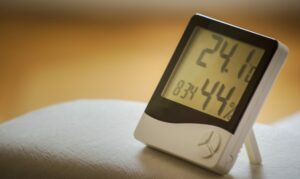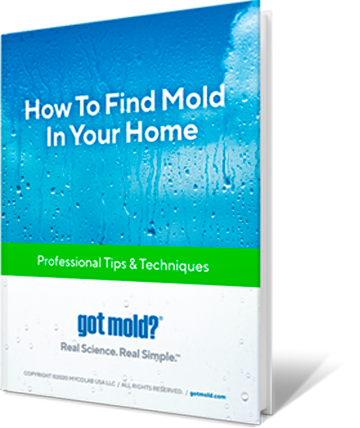
Life requires a delicate balance against the elements. Not too cold, not too hot. Not too moist, not too dry. Existence within those parameters makes for comfortable and healthy living. Outside of them, though, lies a breeding ground for conditions that often lead to illness and disease. It can be a matter of life and death.
Our bodies are 75% water. Our brains are up to 85%. All of our internal processes require robust hydration, and a lack of water can cause numerous adverse health effects ranging from dry mucus membranes and nosebleeds to serious infections. In F. Batmanghelidj’s book, The Body’s Many Cries for Water, the author asserts: “Chronic, unintentional dehydration is the origin of most pain and degenerative diseases in the human body.”
During the winter months — in cold climates — the humidity can drop to levels well below the human comfort zone. Air leaks that let cold air into your home allow moisture to be sucked right out of the building. The American Society of Heating, Refrigerating and Air-Conditioning Engineers (ASHRAE) suggests you maintain indoor relative humidity (RH) at 30-60%RH, but many people start experiencing difficulties below 40%RH.
When humidity is low, adding moisture to the air is vital, but you must do it properly or else you’ll end up with a different set of problems. Above 60%RH and you begin to create an environment conducive to mold growth, dust mites, bacteria and other unwanted guests. The key, of course, is finding the right balance.
Here’s the healthy home mantra: Don’t modify what you don’t quantify. That means that before you do anything, know what you’re dealing with.

Photo by Kaffeebart on Unsplash
Humidity gauges, also known as hygrometers, are inexpensive and provide the information you need to decide whether to add or remove moisture from your home. I prefer the ones with remote sensors, which allow the monitoring of areas that are out of sight/out of mind, such as crawlspaces, attics, outbuildings, etc. I use one of these to keep an eye on the conditions in my kitchen, outside, and basement.
Choosing the Right Humidifier for Your Home
Whole Home vs. Standalone
Once you’ve quantified the RH of your living spaces, the next important decision is choosing how to add humidity, around which there is much confusion. In essence, you are choosing between whole-home systems and standalone units.
Whole-home systems are installed in the air handler of a forced-air system, while standalone units, which can be bought retail, simply plug into the wall in areas where you spend the most time, like a bedroom.
My primary gripe with whole-home systems (also referred to as “inline” systems) is their history of malfunctioning and their tendency to promote microbial growth. The old drum types were the worst: Not only did they fail, but they allowed mold and bacteria to proliferate in the airflow of your ventilation system. If you have a humidifier built into your current HVAC system, have it evaluated by a professional to ensure you aren’t pumping other things into your ducts aside from the intended moisture.
Recently there have been some significant improvements in the way these inline systems are designed, which has lessened my concern. But I still prefer the standalone units because they are easier to maintain, and because their visibility is a consistent reminder to do so.
Cool vs. Warm
There has long been debate about the advantages and disadvantages of cool mist versus warm mist and steamers. Pediatricians have historically recommended cool mist, primarily to reduce the chance of burns that have, in the past, been associated with some warm mist and steamer units. However, given what’s currently on the market, that seems to be less of an issue than ever before. It’s my professional opinion that warm mist and steam/vaporizer types are far better in terms of effectiveness and cleanliness.
Cool
There are, by and large, three kinds of cool mist humidifiers: evaporative, ultrasonic and impeller.
Evaporative models utilize a wick/filter, a water reservoir, and a fan. First, water from the reservoir saturates the filter. The fan then pulls in air and pushes it through the filter, thereby speeding up the evaporation process and forcing moisture into the ambient air.
These units are somewhat quiet (as loud as the fan) and require little energy, but because of the filter, they are the most likely to become veritable Petri dishes, fostering microbial growth similar to that of whole-home humidifiers discussed above. And though evaporative units won’t add unwanted heat to the room, they take a long time to bring the humidity up and require daily cleaning. When not in use, they should be emptied and dried thoroughly.
Ultrasonic humidifiers, on the other hand, are filterless and use vibrations produced by high-frequency sound waves imperceptible to the human ear to emit a fine, cool fog.
They are quiet and efficient but often have the pesky side effect of creating white mineral dust that can get all over your stuff. Some of them come with mineral absorption pads or pods to help minimize this issue, but those need to be replaced regularly. And while many ultrasonic units have anti-microbial features, they still should be cleaned out regularly. Like all humidifiers, when not in use they should be emptied and dried thoroughly.
Impellers are the most simple of the cool mist technologies — making them the least expensive — but because the moisture is released using high-speed rotating disks they are far and away the noisiest. Impellers also use filters, which necessitate regular replacement and extra vigilance when it comes to maintenance and cleaning.
Warm
Warm mist humidifiers, commonly referred to as steamers or vaporizers, turn water from a reservoir into steam through an internal heating mechanism. They are very effective at adding moisture to a room and because of the heated water, they experience lower microbial activity than the cool mist variety.
Burn risk is often cited as a concern with warm mist humidifiers, but unless you are using a true steamer, there is little reason to worry. Most, if not all, warm mist units these days allow the hot water vapor to cool before entering the air, reducing the burn risk almost entirely. And many feature ultraviolet lights to help augment the antimicrobial nature of the vapor.
The warm mist will add some warmth to the room, which is handy in colder months, but they may create an uncomfortably muggy environment if you let them run humidity levels above 60%. Indeed, in rooms where maintaining consistent temperature control is a top priority, a warm mist may not be the best option. But otherwise, they are what I recommend in most cases.
A Word on Maintenance
All humidifiers require maintenance to avoid becoming breeding grounds for biological contaminants. Make sure you read the instructions thoroughly. I strongly recommend avoiding harsh chemicals, such as bleach, when cleaning your humidifier. For one, you don’t want that stuff being vaporized and put into the air. And there’s also the chance that when that vapor reacts with the unit’s plastic housing, it will create other chemical compounds that you wouldn’t want to breathe, either.
Humidity control is the most important aspect of healthy indoor air. Too little and you’ll find yourself wrestling with constant colds, sinus issues and skin problems. Too much and you’ll end up with an increased allergen load in the house due to dust mites and mold growth. But by following the guidance above and keeping humidity levels between 40-60%, you and your family will be sufficiently well-balanced to enjoy all that winter has to offer.
Visit www-staging.gotmold.com to learn more about humidity, mold and indoor air quality, and for a look at the world’s best DIY mold testing device.

